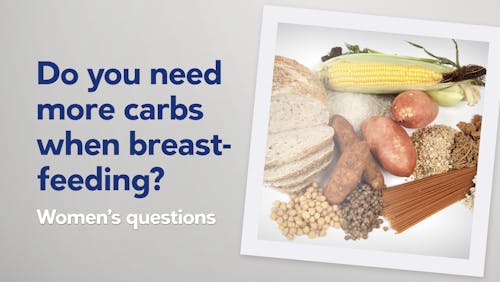A closer look at infant neural tube defects and diets – do you know what to eat for the sake of your unborn child?

I have been thinking a lot lately about what women in their childbearing years should know about neural tube defects, or NTDs — especially those eating a low-carb or ketogenic diet.
A NTD is a serious malformation affecting the brain or spinal column of the developing fetus. It arises within the first 30 days after conception, often before many women even know they are pregnant. Each year, there are at about 300,000 NTD-affected pregnancies worldwide, with potentially many more NTDs that go unreported.
For the last few decades it has been known that women around conception need to consume enough folate/folic acid — also known as vitamin B9 — to reduce the risk of NTDs.Many women of reproductive age are now choosing a ketogenic or low carb high fat diet for weight loss, diabetes reversal, PCOS, improved fertility. Don’t worry. You can get all the folate you need on a low carb ketogenic diet by eating lots of leafy green vegetables, asparagus, avocados, brussels sprouts, broccoli, eggs, seafood, and meat — especially organ meat such as chicken livers.
If, however, your keto diet includes a lot of fat bombs, bulletproof coffees, protein shakes and keto dessert “treats” — and not a lot of vegetables, eggs, seafood or meat — you might not be getting enough folate to prevent NTDs. You may want to up your consumption of natural folate-rich foods or add vitamins with folic acid into your daily consumption.
Over the last two decades many countries, including the U.S. and Canada, started fortifying flour, corn and rice products — essentially adding folic acid to bread, cereal, cakes pastries and other non-nutritious foods — to ensure that women who were not eating enough vegetables and meat were getting enough vitamin B9 to prevent NTDs. In a way, governments fortified junk food — the carbohydrates that were making many of us fat and unhealthy. Many women between the ages of 19 and 45 are not aware of NTD risk factors or the fortification of carbohydrates with folic acid in North America and other regions.
Folate is needed for cell reproduction as the tiny embryo is rapidly dividing and laying down the precursor cells that eventually become the baby’s brain and central nervous system. Two of the most common NTDs are spina bifida, where the spinal column does not fuse or develop properly, or anencephaly, where the brain and skull may be malformed or absent.It is a devastating, often fatal, condition. As a health journalist I have been involved for years in spreading the message about NTD prevention, including ghostwriting two reports for a leading Canadian public health official that include sections on NTD prevention at the population level.
I have a personal connection, too. In my 20s a girlfriend had a baby with anencephaly. She and her husband discovered in the third trimester that their first child, whose kicks and movements they were celebrating, had no skull and only a small portion of a brain stem. The female infant could not survive outside her mother’s womb. The parents bravely chose to continue with the pregnancy so they could donate their infant’s organs, helping three other children. My friend went through a long labor knowing the baby she would deliver was destined to die soon after birth. They later went on to have two healthy children, but the tragedy and grief of that first pregnancy and birth has never been forgotten.
Since then, I have cared passionately about helping moms-to-be know about how to prevent NTDs with the best current information available.
Here’s five things you should know:
1. Solving the age-old puzzle: Linking NTDs to folate deficiency in diet
NTDs have existed from the earliest times of human civilization but for eons their cause was veiled in mystery. In the mid-20th century, researchers began to realize a number of intriguing factors about NTD incidence: they seemed to fluctuate by season of conception, by geography, and in response to external forces, like wars and economic depressions. Women in the lowest socio-economic classes had quadruple the rates of NTDs compared to those in the highest levels of wealth and education. Women living in cities had higher rates than women living on farms. Into the 1970s, since populations that ate a lot of potatoes like the Irish and Welsh had higher NTD rates, consuming spoiled or blighted potatoes was hotly debated as a possible cause.
It was in 1965, however, that epidemiologists began to put the picture together: what was common in all those scenarios was lack of access to high quality fresh green vegetables, meat and fruit that had high amounts of the micronutrient folate, also called vitamin B9. The vitamin, we know now, has essential roles in a number of cellular processes including red blood cell formation and the replication of DNA and RNA, the building blocks of life.
The takeaway: a diet rich in fresh leafy green vegetables and animal proteins, particularly organ meats, has been nature’s way of preventing NTDs for millennia. Make your LCHF and keto diets high in both.
2. There are differences between naturally-occurring folate and synthetic folic acid
Called folate in its natural form, the B vitamin is found in high amounts in spinach, kale, romaine lettuce, beet tops and chard; in asparagus, brussels sprouts, and broccoli; and in egg yolks and meats, especially liver and kidney; and in avocado and citrus fruits. Here is a good list of food folate sources.
In the 1940s, the chemical compound folic acid, the synthetic form of the nutrient — with a slightly different molecular structure — was isolated from spinach.
Natural folate breaks down quickly and cannot withstand industrial processing or long-term storage. Synthetic folic acid, however, is more shelf stable and can be made into vitamin supplements or withstand industrial processing to be added to flours, foods, and cereals, remaining viable for months and years in grocery stores and pantries. There is also new evidence that natural folate and synthetic folic acid are absorbed and metabolized differently by the cells of the intestine.
While the role of a folate-rich diet in preventing NTDs had been known since the late 1970s, it was 1991 when the seminal publication of results of a UK randomized control trial found giving women daily folic acid supplementation in a vitamin pill prior to conception could significantly reduce the incidence of NTDs. The conclusion was made: “Public health measures should be taken to ensure that the diet of all women who may bear children contains an adequate amount of folic acid.” In 1992, the U.S. Center for Disease Control recommended that all women of childbearing age consume the equivalent of 400 micrograms of folic acid daily to prevent NTDs, either through a healthy folate-rich diet or as supplemental folic acid.
The takeaway: folate can be consumed through natural sources or folic acid through vitamin supplements to reduce the risk for NTDs.
3. Many women are uninformed, so countries decided to fortify flour foods with folic acid
To this day, numerous surveys of reproductive age women in the UK, Europe, Canada, USA — in fact almost every nation — show big knowledge gaps in awareness of NTDs and the effective actions to take to best prevent them.
In the research and writing of this post, I, too, asked young women, in their 20s and early 30s, what they knew about NTDs. To a person, they were not aware of the term. When I then asked, ‘Do you know what you can do prior to conception or in the early days of pregnancy to avoid certain kinds of birth defects?” They all answered (correctly): “Don’t drink alcohol.” No one said, however, that they should also be sure to eat a diet full of natural folate and/or take a pre-natal vitamin with folic acid.
That, in a nutshell, has been public health’s problem for decades: how to get the word out to change women’s dietary behaviour in time to prevent NTDs? Since many women of child bearing age may not eat enough folate-rich foods, nor take vitamins prior to unplanned conceptions, since the late 1990s some 80 countries, lead by Oman, Canada and the U.S., have legislated mandatory fortification of wheat flour products and cereals with folic acid.
At its heart, food fortification is public health’s way to infuse popular (less healthy foods) with much-needed nutrients. The belief was rather than spend millions on health promotion to tell women to eat their vegetables, by putting it in bread, cakes, cookies and breakfast cereals it would almost effortlessly increase the population’s intake. A few countries also now fortify rice or corn flour with folic acid for the same reason. Other countries such as Brazil and Colombia have extensive voluntary fortification programs.In polling my young Canadian women friends and relatives, however, none of them knew that by eating bread, cereal, sandwiches, cakes, cookies and other flour products they were consuming synthetic folic acid through mandatory food fortification programs for two decades now.
In both the U.S. and Canada, mandatory folic acid fortification of flour was legislated in 1998 when public health officials were very concerned that NTDs were rising. In the Canadian province of Ontario, for example, NTDs rates increased from 11.7 per 10,000 pregnancies in 1986 to 16.2 per 10,000 in 1995. Most researchers say the higher rates were related to more prenatal screening and detection, but I think a strong argument could be made that with the focus on low-fat diets that were promoted in the 1970s, 80s and 90s, people consumed more carbohydrates and shunned the folate-high meat, eggs and vegetables (smothered in butter and cheese that made the veggies more tasty.)
In the countries with mandatory folic acid fortification, most add 140 micrograms of folic acid to every 100 grams of wheat or cereal product. In 2006 the World Health Organization establish minimum and maximum levels of folic acid to fortified foods. Those countries that have mandatory fortification of wheat flour and cereal grains with folic acid have seen NTDs fall anywhere between 30 to 70 per cent. However, it has now been recognized that not all NTDs are prevented by folic acid supplementation and that the lowest possible rate of NTDs is likely around 4 cases for every 10,000 births, even with mandatory fortification.
It is interesting to note that almost all of the countries in Europe do not fortify flour and cereals with folic acid, despite repeated attempts of various organizations and health lobbies to convince more widespread fortification. The main reason for not fortifying flour products in Europe is resistance to altering beloved bread products, and concern that folic acid can mask pernicious anemia which is a significant problem in more than 20% of the population over 65 years of age, especially in Northern Europe.
There is also considerable concern that folic acid, because it is used by cells in rapid cell division, may also spur the growth of some types of cancers, especially colon cancer and some breast cancers. This is a new concern and not yet proven.
There is yet another concern that because of the differences in the way intestinal cells can absorb and break down folate versus folic acid, high intake of the synthetic folic acid in fortified foods leads to higher rates of unmetabolized folic acid (UMFA) circulating in the blood and other body fluids like breast milk of all those exposed to fortified foods. We honestly don’t know yet what this means to human health.
The unintended consequences of mandatory food fortification with folic acid is being explored by many researchers, but as a 2013 paper notes:
the [public health] endeavor is unique in that its target population (women of the periconceptional period) is many times smaller than the population it affects (everyone who ingests fortified grain products). Folate fortification has been wildly successful in terms of its goal; since its inception, the incidence of neural tube defects has markedly decreased. In the wake of this public health triumph, it is important to catalog both the serendipitous benefits and potential side effects of folic acid supplementation.
The takeaway: fortification of staple foods, like flour, bread and cereals, has positive and negative results, which are all still being discerned.
4. What’s better: Wholesome natural foods or cakes, cookies and pasta?
Here is a very current controversy: a recent US study found a possible statistical correlation between women of reproductive age who eat few carbohydrates, and a slightly increased risk of NTDs. That was the message sent out by a press release about the study and amplified around the world by dozens of stories in the news media in February 2018. “Low-carb diets may increase the risk of birth defects” the headlines blared.
The study compared the diets of mothers of 1,600 US births with NTDs to the diets of mothers of 9,500 births without birth defects between 1998 and 2011. It concluded that mothers eating lower carb (and thus not consuming many fortified flour products) had a slightly higher risk of NTDs. That means the researchers were potentially implying that since women who eat a low-carb diet are not exposed to flours and processed foods fortified with folic acid, they would in essence be better off eating a diet high in cakes, breads, pastries, pasta and cookies than an unprocessed whole food diet of vegetables, eggs, dairy products, and meat.
Andreas Eenfeldt also noted flaws: “The mothers who reported a lower carb intake were also older, more obese, smoked more and drank more alcohol, all things that may be connected to an increased risk of birth defects, so it’s perhaps not a fair comparison.”
“However, it can still be a good idea to make sure to have enough folic acid if you are planning to conceive. Just to be safe,” he added.
One fact, that was not widely reported out of the study: only those who had unplanned pregnancies and ate low carb had the higher rate of NTDs. Those women eating a low-carb diet who planned their pregnancies — presumably making sure they ate well before conception and took supplements if necessary — did not show increased NTD rates.
Another fact that went largely unreported: While the researchers disclosed they had no conflict of interests in conducting the study, their research institution, the University of North Carolina UNC Gillings School of Global Public Health, has had since 1994 a partnership with the Coca-Cola Company — which they proudly describe on their website. They note this partnership has enabled them to engage in “wider efforts to educate and inform consumers on proper nutrition.” While not necessarily reducing the credibility of the study, it raises questions about the judgement of the research institution. “Global public health” does not belong in the same sentence as Coca-Cola, unless it’s about the negative effects of sugar.
The takeaway: you do not need to eat breads, cakes and cookies to have a healthy pregnancy. But do ensure you are getting enough folate or folic acid, either through your diet or through prenatal vitamin supplementation if you are planning to get pregnant.
5. Genetics, MTHFR deficiency, type 2 diabetes and other risks to know
As noted above, even with mandatory food fortification programs, not all NTDs can be prevented. The lowest rates achievable seems to be 4 in 10,000 pregnancies even with adequate levels of folate or folic acid consumption.
Even with mandatory fortification programs, women with obesity and type 2 diabesity have a six fold higher risk for NTDs – all the more reason to eat a healthy low carb diet without bread and flour products. Genetic risks factors for type 2 diabetes and metabolic syndrome, even if the mother is not yet diabetic, also seem to increase the risk of NTDs.In recent years a newly discovered gene called MTHFR — methylenetetrahydrofolate reductase — has been discovered that creates a special enzyme involved in the complex process of folate metabolism, breaking down folate and folic acid to be used in cellular processes. Specifically, this enzyme converts a molecule called 5,10-methylenetetrahydrofolate to a molecule called 5-methyltetrahydrofolate. Genetic studies have found mothers with a specific variation of this gene, specifically two copies of a MTHFR-C677T, also called MTHFR deficiency, have a higher rate of NTDs. It is estimated that up to 40 per cent of North Americans carries at least one copy and perhaps 15-20% may carry two copies of this gene. Another variation of the MTHFR gene (called a genetic polymorphism) is A1298C. Two copies of it, or one C677T and one A1298C, may also reduce folate metabolism efficiency but not as much as two C677Ts.
Carrying two copies of the genes for MTHFR deficiency has also been associated with epilepsy, polycystic ovarian syndrome, depression — all conditions that here at Diet Doctor have been shown to benefit from low carb diets. A huge amount of research is underway, including 22 randomized control trials to better understand MTHFR deficiencies and their risk factors or impact on health.
Some physicians, like US naturopath Dr. Ben Lynch and others are promoting genetic testing treatments and supplements to supposedly address MTHFR deficiency issues. Although the evidence is not yet clear, Lynch and others recommend those with suspected MTHFR deficiencies avoid consuming synthetic folic acid —because they cannot break it down as efficiently. They suggest instead consuming plenty of whole, natural folate-rich foods. A folate supplement, called 5-MTHL (L-Methylfolate) is also available in health food stores that, supposedly, is easier to break down for those with MTHFR deficiencies. This advice is still controversial.
The takeaway: genetics, diabetes, obesity and MTHFR deficiencies may all contribute to NTD risks. Eating a whole, unprocessed foods, naturally rich in folates and low in carbohydrates, is a prudent choice for all these other risk factors, both NTD prevention and to optimise good health.
In short, you cannot go wrong by eating a healthy wholesome diet full of vegetables, meat, seafood and eggs — and you will get plenty of folate for any planned or unplanned pregnancy. You do not need to eat fortified bread, cakes, pasta and cereals to protect your unborn child.
If your low-carb keto diet, however, does not have a lot of vegetables, meat and seafood, you may be wise to supplement with vitamins containing folic acid.
Earlier
Is low carb safe during pregnancy?
Top 8 reasons to adopt a low-carb diet for polycystic ovarian syndrome
Trying to conceive? Try the better baby ciet of beef, butter & bacon
Can low carb help with gestational diabetes in pregnancy?













